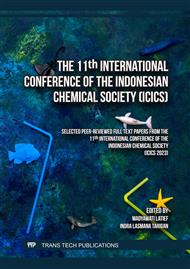[1]
Wang TF, Wang XZ, Guo MM. A Study on the Construction of Virtual Simulation Experiments for Basketball Projects. ACPES J Phys Educ Sport Heal 2023;3:44–52.
DOI: 10.15294/ajpesh.v3i1.70203
Google Scholar
[2]
Bogusevschi D, Muntean CH, Muntean G-M. Teaching and Learning Physics using 3D Virtual Learning Environment: A Case Study of Combined Virtual Reality and Virtual Laboratory in Secondary School. J Comput Math Sci Teach 2020;39:5–18.
DOI: 10.5220/0007760803040309
Google Scholar
[3]
Antonelli D, Christopoulos A, Laakso M, Dagien V. A Virtual Reality Laboratory for Blended Learning Education : Design , Implementation and Evaluation. Educ Sci 2023;13:1–16.
Google Scholar
[4]
Marougkas A, Troussas C, Krouska A, Sgouropoulou C. Virtual Reality in Education: A Review of Learning Theories, Approaches and Methodologies for the Last Decade. Electron 2023;12.
DOI: 10.3390/electronics12132832
Google Scholar
[5]
Martin D, Malpica S, Gutierrez D, Masia B, Serrano A. Multimodality in VR: A Survey. ACM Comput Surv 2022;54.
DOI: 10.1145/3508361
Google Scholar
[6]
Rzeszewski M, Orylski M. Usability of webxr visualizations in urban planning. ISPRS Int J Geo-Information 2021;10:1–16.
DOI: 10.3390/ijgi10110721
Google Scholar
[7]
Fanini B, Ferdani D, Demetrescu E, Berto S, D'annibale E. Aton: An open-source framework for creating immersive, collaborative and liquid web-apps for cultural heritage. Appl Sci 2021;11:1–38.
DOI: 10.3390/app112211062
Google Scholar
[8]
Fitria TN. Augmented Reality (AR) and Virtual Reality (VR) Technology in Education: Media of Teaching and Learning: A Review. Int J Comput Inf Syst Peer Rev J 2023;04:14–25.
Google Scholar
[9]
Pai YS, Outram BI, Tag B, Isogai M, Ochi D, Kunze K. GazeSphere: Navigating 360-degree-video environments in VR using head rotation and eye gaze. ACM SIGGRAPH 2017 Posters, SIGGRAPH 2017 2017:2016–7.
DOI: 10.1145/3102163.3102183
Google Scholar
[10]
Nagta A, Sharma B, Sheena, Sharma A. Oculus: A New Dimension to Virtual Reality. Int Conf Autom Comput Renew Syst ICACRS 2022 - Proc 2022:1169–72.
DOI: 10.1109/ICACRS55517.2022.10029200
Google Scholar
[11]
Rho T, Choi S, Kim ES, Kang NY, Cho SR, Khang SH. Optimization of Chemical Oxygen Demand Determination in Seawater Samples Using the Alkaline Potassium Permanganate Method. Ocean Sci J 2018;53:611–9.
DOI: 10.1007/s12601-018-0040-0
Google Scholar
[12]
Leszczyński J, Walery J. The removal of organic compounds from landfill leachate using ozone-based advanced oxidation processes. E3S Web Conf., vol. 45, 2018, p.1–7.
DOI: 10.1051/e3sconf/20184500046
Google Scholar
[13]
Thi D, Hue K. Development of Chemiluminescence Method for the Measurements of Chemical Oxygen Demand, Hypochlorite, Ammonium, and Urea in Water 2017.
Google Scholar
[14]
Fadzry N, Hidayat H, Eniati E. Analisis COD, BOD dan DO pada Instalasi Pengolahan Air Limbah (IPAL) Balai Pengelolaan Infrastruktur Air Limbah dan Air Minum Perkotaan Dinas PUP-ESDM Yogyakarta. IJCER (International J Chem Educ Res 2021;5:80–9.
DOI: 10.20885/ijcer.vol5.iss2.art5
Google Scholar


